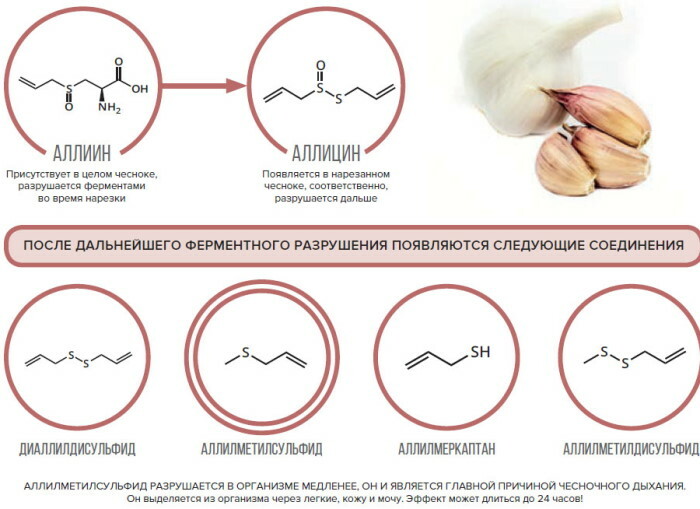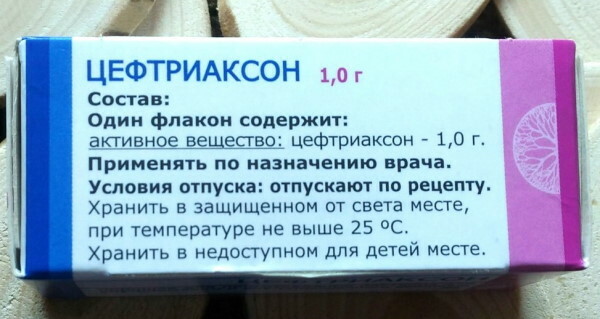The main symptom of umbilical hernia in adults (see. photo) is an education in the field of tumor bulging belly button, which consists of a part of the organ, peritoneum, subcutaneous fat and the skin itself.
Causes of
The reason for the formation of umbilical hernias in adults is a significant expansion of the umbilical ring. This pathological condition may occur in the following cases:
- genetic predisposition to weak connective tissue;
- damage to the neuromuscular system at the time of injury;
- late pregnancy;
- obstructed labor;
- multiple pregnancy and polyhydramnios during pregnancy;
- abdominal obesity;
- congenital malformations structures of the anterior abdominal wall;
- a significant reduction in body weight in the short term;
- decreased tone the abdominal muscles with a lack of physical activity.
However, not all people with the above risk factors develop umbilical hernias. For the occurrence of this pathological condition is necessary to produce the impact of factors such as:
- heavy exercise;
- frequent constipation;
- difficulty in urination in benign prostatic hyperplasia, urethral stricture;
- prolonged cough in patients with chronic respiratory diseases.
Classification
Umbilical hernias in adults can be divided into 2 types.
- Irreducible hernia. It is characterized by the inability to straighten protrusion inside the ring. This is because the adhesive begins the process by which fabric are spliced with hernia hernial orifice. This happens when running umbilical hernia, which can be a serious threat to health and life of the patient, because the chances of serious complications.
- Vpravimaya (free). When vpravimyh omphalocele contents bulge easily disappears into the peritoneum, as soon as the patient is in the horizontal position. This is possible in the early stages of the disease when the hernia is only beginning to emerge. If you do not deal with the treatment of umbilical hernia, it can move to the next species.
There are congenital and acquired umbilical hernia. In the first case of congenital hernia can be diagnosed at birth. It is caused by the fact that the umbilical hole in the infant does not have time to form completely. Umbilical hernia in adults is usually acquired during life.

Symptoms in adults
Initially, the development of an umbilical hernia patient notes in a small protrusion of the navel. Some pregnant women even take him for a normal process of pregnancy and does not attach importance to his appearance. Easily reduce a diverticulum, it disappears in the supine position, and the patient does not feel any discomfort due to its appearance.
In some cases, blubber oil seal may completely overlap the umbilical ring, hernia and such are not changed in size and further proceed without any particular symptoms. If the gland begins to pass through the enlarged muscles, the hernia enlarges and makes itself felt more severe manifestations.
Symptom of umbilical hernia depends on many factors:
- the presence or absence of infringement hernial sac;
- its size;
- presence of adhesions in the abdominal cavity;
- general condition of the patient.
With the progression of the disease in the abdomen are formed adhesions that interfere reposition hernial sac. Movement, exercise, trying to push - all this leads to pain and disturbances in bowel habits. The patient begins to complain of periodically appearing constipation and nausea.
Especially difficult is transferred progressive umbilical hernia with obesity and pregnancy, t. K. A growing constantly presses the stomach muscles of the abdominal wall and aggravates the condition of the patient.
Complications of umbilical hernia
The patient's condition usually worsens with increasing the size of the hernia:
- Diverticulum becomes dense, and to the touch a person experiences pain.
- Bodies located in the hernia is no longer possible to the right in place.
- Inflammation of the organ located in the hernial sac. This is accompanied by swelling, pain and redness in the area of the navel.
- Fever and general condition of the patient deteriorates. All of these dangerous symptoms characterize uschemlonnoe state of umbilical hernia, the most severe form of the disease.
- Causing severe pain, vomiting, nausea and constipation.
- Blood to uschemlonnomu, flattened body ceases to act, which leads to its withering away. This condition is life-threatening.
- Peritonitis can develop without medical intervention. When a serious inflammation of the abdominal cavity can be fatal.
Similar to the symptoms is considered a complication of bowel obstruction. Part of the colon, which has appeared in the hernia, clogged feces. If untreated, unfavorable forecasts, this complication is also able to significantly shorten human life.
Any suspicious seal and a protrusion at the navel should be cause for concern. Sometimes these symptoms are characterized by the presence of metastasis of cancerous stomach tumor. This is a rare phenomenon, but for the sake of health and life, any risk factors is better to exclude.
What is an umbilical hernia: photo
The photo below shows how the disease manifests itself in adults.

Diagnostics
Diagnosis of umbilical hernia is simple enough. Clinical symptoms immediately suggests the idea of setting the correct diagnosis. However, it is worth remembering the need for differential diagnosis with other diseases.
To this end, it is recommended to carry out a number of instrumental methods, among which the most informative are:
- inspection and palpation formation (legkovpravlyaemaya finger);
- US herniation;
- EGD;
- herniography - technique allowing to explore the hernia after administration of a contrast agent into the abdominal cavity;
- X-ray of the stomach and duodenum.
How to treat?
The only way to treat an umbilical hernia in adults is to perform surgery. Only in children under 5 years of umbilical ring defects can be eliminated spontaneously with time.
In adults, the expanded umbilical ring does not return its shape even after prolonged wear a compression bandage. That is why in order to avoid the development of complications of the disease state is shown performing surgical hernia correction.

Surgery for umbilical hernia
Operation aimed at eliminating the herniation is called a hernia repair. Types of hernia repair, which are subject to umbilical hernia:
1) Laparoscopic hernia repair:
In laparoscopic surgery the mesh implant is also used, it is installed through a puncture in the abdominal wall. The surgeon does not make a large incision, which substantially reduced time of postoperative rehabilitation.
But there are some difficulties. For laparoscopic hernia repair need special equipment and trained surgeons. Such a possibility is not at all hospitals. The operations through the puncture contraindicated in patients with pathology of the respiratory and cardiovascular systems with a large expansion of umbilical ring.
2) Tension hernia repair:
- The surgeon makes an incision, provides access to the hernia sac.
- Depending on the size of the hernia sac, he or simply dipped in the stomach, or sewn and cut.
- Umbilical ring is sewn, adjacent reinforcing fabrics.
The disadvantage of this method is the high rate of recurrence: postoperative umbilical hernia occurs again in 4-20% of patients. Rehabilitation can last up to a year.
3) Pull hernioplastics:
The operation is performed in a similar manner, but to strengthen the navel, the surgeon uses a special synthetic mesh. Later it grows surrounding tissues.
Pull hernioplastics advantage is the relatively low likelihood of relapse. A hernia occurs again on average, only 2 patients out of 100. rehabilitation period lasts only 30 days, even for those people who are professionally involved in sports.
4) Operation at a strangulated umbilical hernia:
If the infringement of an umbilical hernia operation should be carried out urgently. The risk of infringement does not depend on the size of the hernia - it increases the more the longer the patient does not go to the doctor.
During surgery, the doctor exposes the hernial sac and examining body that is inside. If it is not changed, it's just immersed in the stomach. If part of the body of the killed - it was excised. And if the doctor doubts arise - it obkladyvaet body napkins soaked in warm saline, and introduces novocaine solution.

Recovery after surgery
Of course, much depends on the general condition of the patient, how the operation was carried out professionally. But as a rule, doctors' recommendations in the recovery period are as follows:
- the same day, almost immediately after the surgery, the patient is allowed to get out of bed;
- you must wear a bandage - it will reduce the pressure on the seam;
- the second and subsequent days of exercise should be increased gradually;
- the duration of use of a special bandage determine only the doctor - to take this device can not be without his permission;
- 10-15 days the patient is allowed to make brief jog, do simple exercises in the charge;
Weight lifting, Weight Training, any patient is allowed only 30 days after surgery, even if you use a laparoscopic surgical method of treatment.
food rules
If the patient has had surgery to remove a hernia, then he needs to improve the overall condition of the body, adhering to the following rules in the diet:
- exclude pickles, smoked, spicy dishes;
- exclude fruit juices;
- Add to your daily diet protein meals;
- a few days after surgery to try to only eat liquid food, which will not provoke the formation of constipation.
If umbilical hernia appeared, then a proper diet can help alleviate the symptoms and improve the effectiveness of treatments. You must adhere to the following rules:
- the use of alcohol, coffee, strong tea;
- eat fractional (5 -6 times a day in small portions);
- give preference to only thermally processed foods;
- eliminate junk food: grilled meat, confectionery and bakery products, canned food, spicy seasonings.

prevention
To prevent the development of an umbilical hernia should be avoided:
- overweight;
- sedentary lifestyle;
- poor nutrition;
- heavy physical exertion.
Also contributes to the prevention of umbilical hernias:
- wearing a brace during pregnancy;
- regular exercise to strengthen the muscles of the abdominal wall;
- balanced diet;
- maintaining a normal body weight.
Umbilical hernia at first glance, a simple and intuitive disease, which is found on their own, but must necessarily be treated on the recommendations and under the supervision of a specialist. If we use the available information, to react and to fulfill all the prescribing physician, the healing is complete and fast.




